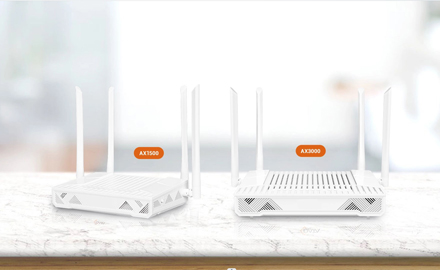Optical Line Terminal (OLT) plays a pivotal role in Fiber-to-the-Home (FTTH) networks, serving as a crucial component in the deployment of high-speed broadband connectivity to individual residences. In the context of FTTH, OLT is a key piece of equipment that resides in the central office or data center of a telecommunication service provider. This device is responsible for managing and controlling the flow of data over the fiber-optic network, ensuring efficient communication between the service provider's core network and the customer's premises.
At its core, the OLT serves as the convergence point where multiple fiber-optic lines from various homes or businesses terminate. It aggregates and manages the traffic, allowing for the efficient utilization of the high-speed capabilities of fiber-optic technology. Here's a detailed exploration of the application of OLT in FTTH:
1. Termination and Aggregation:
The primary function of the OLT is to terminate the incoming fiber-optic lines from individual subscribers. Each fiber connection from homes or businesses terminates at the OLT, and the device aggregates these connections to streamline the data flow. This aggregation is crucial for optimizing network efficiency, ensuring that the available bandwidth is used effectively.
2. Centralized Control and Management:
OLT serves as a centralized point for controlling and managing the FTTH network. It oversees various tasks, including bandwidth allocation, traffic management, and Quality of Service (QoS) enforcement. By centralizing these functions, the OLT enables providers to maintain a high level of control over the network, ensuring a consistent and reliable user experience.
3. Communication with ONUs:
In FTTH architecture, Optical Network Units (ONUs) are located at the customer premises. The OLT communicates with these ONUs to establish and maintain the optical link. This bidirectional communication allows the OLT to manage data transmission to and from individual subscribers, facilitating the delivery of internet, voice, and video services.
4. Traffic Management and Quality of Service (QoS):
OLTs play a crucial role in traffic management within the FTTH network. They allocate bandwidth to individual subscribers based on their service plans and usage patterns, ensuring fair and efficient distribution of resources. QoS mechanisms implemented by the OLT prioritize critical applications, such as voice and video, to guarantee a smooth and reliable user experience.
5. Security and Encryption:
Security is a paramount concern in modern telecommunications, and OLTs contribute significantly to securing FTTH networks. They often incorporate encryption mechanisms to protect data transmitted over the fiber-optic lines, safeguarding customer information and ensuring the privacy and integrity of communication.
6. Integration with Core Network:
OLTs serve as an interface between the FTTH access network and the service provider's core network. They facilitate the seamless integration of FTTH into the broader telecommunications infrastructure, enabling the delivery of a wide range of services, including internet access, Voice over Internet Protocol (VoIP), and IPTV.
7. Scalability and Upgradability:
OLTs are designed to be scalable to accommodate the growing number of subscribers and increasing bandwidth requirements. This scalability ensures that service providers can expand their FTTH networks to meet the evolving demands of users. Additionally, OLTs are often built with the capability to support future upgrades and new technologies, ensuring that the network remains relevant and competitive over time.
8. Redundancy and Reliability:
OLTs contribute to the overall reliability of FTTH networks by incorporating redundancy features. Redundant power supplies, optical modules, and failover mechanisms help ensure continuous service availability, minimizing downtime and disruptions for subscribers.
9. Network Monitoring and Diagnostics:
OLTs provide tools for network monitoring and diagnostics, allowing service providers to proactively identify and address issues. These capabilities include real-time performance monitoring, fault detection, and troubleshooting tools that contribute to the overall stability and performance of the FTTH network.
In conclusion, the Optical Line Terminal is a critical component in the deployment and operation of Fiber-to-the-Home networks. Its multifaceted applications, ranging from aggregation and traffic management to security and integration with the core network, highlight its importance in ensuring the efficient delivery of high-speed broadband services to individual residences. As FTTH continues to evolve and expand globally, the role of OLTs will remain central in shaping the future of telecommunications infrastructure.
 The Difference Between AX1800 ONU and AX3000 ONU
The Difference Between AX1800 ONU and AX3000 ONU
 How are Huawei OLTs Classified?
How are Huawei OLTs Classified?
 The Future Trend of Optical Line Terminals (OLTs)
The Future Trend of Optical Line Terminals (OLTs)
 The Difference Between ONU and ONT
The Difference Between ONU and ONT